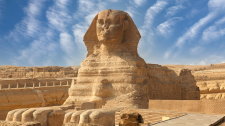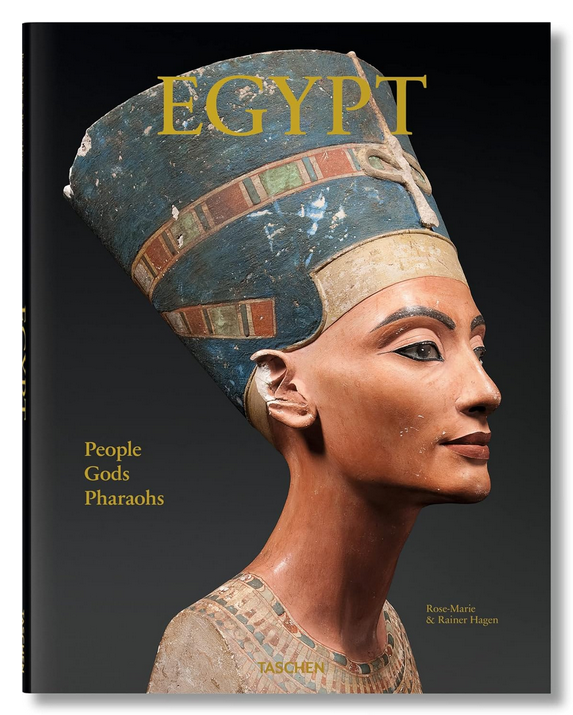- Home
- Art History
- Egyptian Art
Ancient Egyptian Art
Ancient Egyptian art spanned a vast timeline from around 3100 BCE to the conquest of Alexander the Great in 332 BCE.
These artworks offer poignant insights into the culture, beliefs, and daily life of ancient Egyptian civilization. Knowledge of Egyptian civilization rests almost entirely on the tombs and their contents:
- Egyptian attitude held that each man had to provide for his own happy afterlife; thus, funerary arts were essential;
- the way of representing people and animals was codified;
- the great pyramids were constructed as tombs.
Chronologically, the art of ancient Egypt is fragmented into key periods including the ...
- Old Kingdom,
- Middle Kingdom,
- New Kingdom.
Each era comes with distinctive styles and innovations, reflecting social and political changes over time. During the Old Kingdom, for instance, art was characterized by highly stylized and idealized portrayals, epitomized by the sculptures of the Pharaohs, such as the famous Great Sphinx of Giza.
Egyptian history is sometimes spoken of as eras of kingdoms, and as dynasties of rulers.
Note-worthily, the Egyptians considered their Pharaoh (king) to be not only their supreme leader but a god.
One of the most iconic symbols of Ancient Egyptian art is the hieroglyphs, an intricate and complex system of writing that combines logographic, syllabic, and alphabetic elements. This art form combines language and visual impact, as seen in the walls of tombs such as those in the Valley of the Kings. The "art history fill-in worksheet" might guide students to explore these glyphs, enriching their understanding of how language and artistry were intertwined.
A key feature of two-dimensional Ancient Egyptian art is its strict adherence to established conventions. Artists employed a method known as the "Law of Frontality," where figures appeared in composite view: heads and legs are shown in profile, while upper bodies are depicted frontally. This distinctive style was a product of the Egyptian conceptual approach to representing the human figure consistently across centuries, emphasizing the importance of tradition and consistency in Egyptian thought.
The materials used in Ancient Egyptian art were often dictated by availability and religious significance. Statues and tools were carved from durable stones like granite, limestone, and sandstone to withstand the ages. Gold, lapis lazuli, and turquoise were favored for jewelry, retaining symbolic meaning and showcasing wealth and power. Detailed investigations into these artworks can enhance an "educational" experience for students, highlighting the Egyptians' resourcefulness and deep appreciation for aesthetics and symbolism.
One must also consider the distinct contributions of the New Kingdom, which was known for its increased refinement and grandeur. During this time, the reign of Pharaoh Akhenaten saw dramatic shifts in artistic style, often called the Amarna Period. Here, art represented figures more naturalistically, with intimate depictions of the royal family, opposing previous rigid conventions. This shift signifies a brief but impactful evolution, providing a critical point of analysis in the study of Ancient Egyptian art.
Additionally, the theme of daily life in artwork provides a wealth of information about non-royal existence. Tomb paintings depicting agricultural scenes, craftspeople at work, and diverse roles of men and women offer valuable insights into how Egyptians viewed their society and environment. Educational activities, such as recreating these scenes, provide a deeper understanding of the lifestyle in ancient Egypt, making these historical records relevant even for modern educational settings.
Understanding Ancient Egyptian art requires an appreciation of the symbiotic relationship it had with architecture. Monumental structures, including the Pyramids of Giza and the temples of Karnak and Luxor, are masterpieces of engineering and artistic design. These sites serve as canvases that showcase the harmony between structural and decorative art forms, a crucial way to explore the interconnection between form and function in Egyptian aesthetics.
The Old Kingdom
c. 5000 BCE to c. 3000 BCE
Palette of Narmer
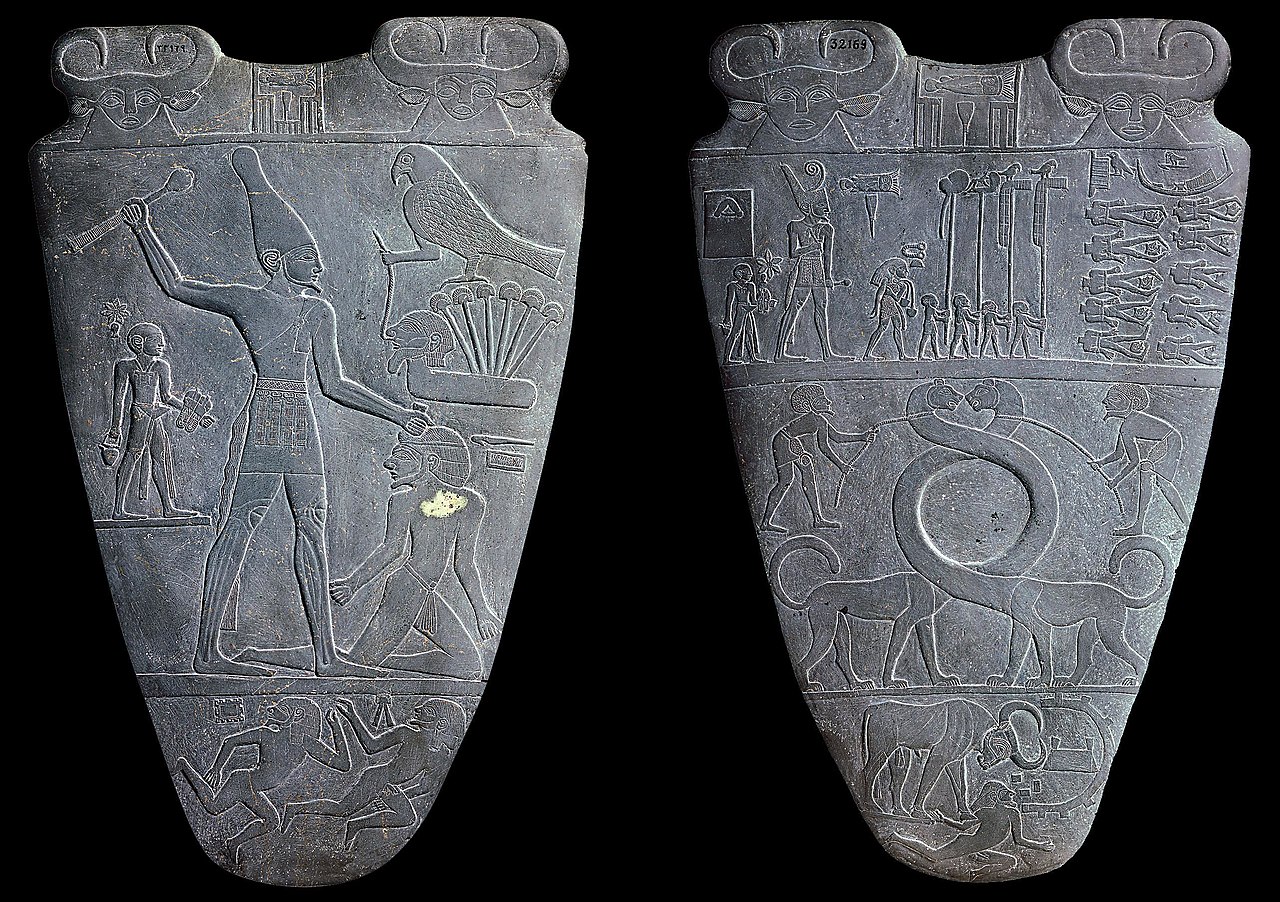 Palette of Narmer ~ c. 3000 BC
Palette of Narmer ~ c. 3000 BCThe Palette of Narmer slate tablets depict the Upper Egypt Pharaoh having conquered Lower Egypt. An enemy is about to be struck by the Pharaoh. At the right can be seen rows of headless victims.
In ancient Egyptian art, especially in the depiction of pharaohs, the principles of frontalism and a specific canon of proportions played a crucial role in conveying authority, permanence, and idealized representations.
see also: "canon of proportions"
Egyptian convention of thought, art, state policy: The Egyptian kingship is divine; its prestige is one with the prestige of the gods. The status of the Pharaoh remained the key feature of Egyptian civilization - it very largely determined the character of Egyptian art.
Knowledge of ancient Egyptian civilization is drawn almost entirely from the ancient tombs and the artifacts therein. Egyptians prepared their tombs for the afterlife where they would continue to enjoy the pleasures of their earthly existence. The mummified body would be the vessel for the afterlife; so, funerary practices (including embalming) and customs became prominent - and part of their belief in immortality.
Architecture
p. 78 - Gardner's
The standard tomb shape of the Old Kingdom was the mastaba. The mastaba (Arabic for bench) was a rectangular brick or stone structure with sloping sides erected over a subterranean tomb chamber that was connected with the outside by a shaft which provided the ka (the spirit self) with access to the tomb.
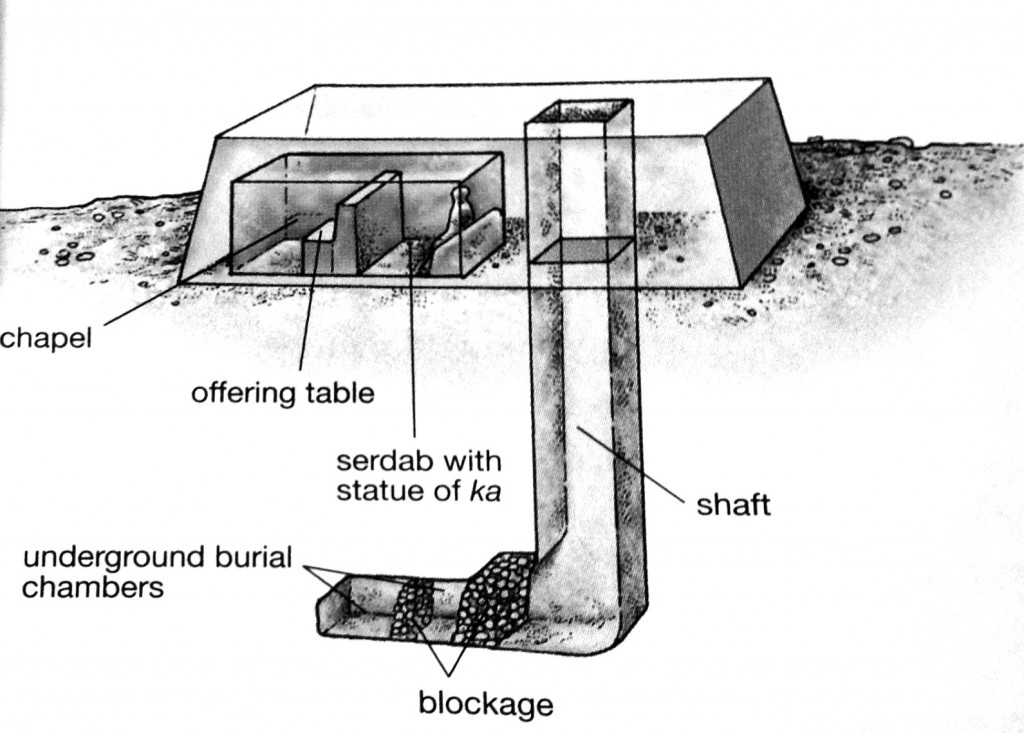
Another form of tomb that developed after the mastaba was the stepped pyramid. The S
Sculpture
Painting and Relief
The Middle Kingdom
Rock-cut Tombs
Painting and Sculpture
The New Kingdom
Architecture
Sculpture and Painting
 Tutankhamen ~ c. 1350 BC Tutankhamen ~ c. 1350 BC |
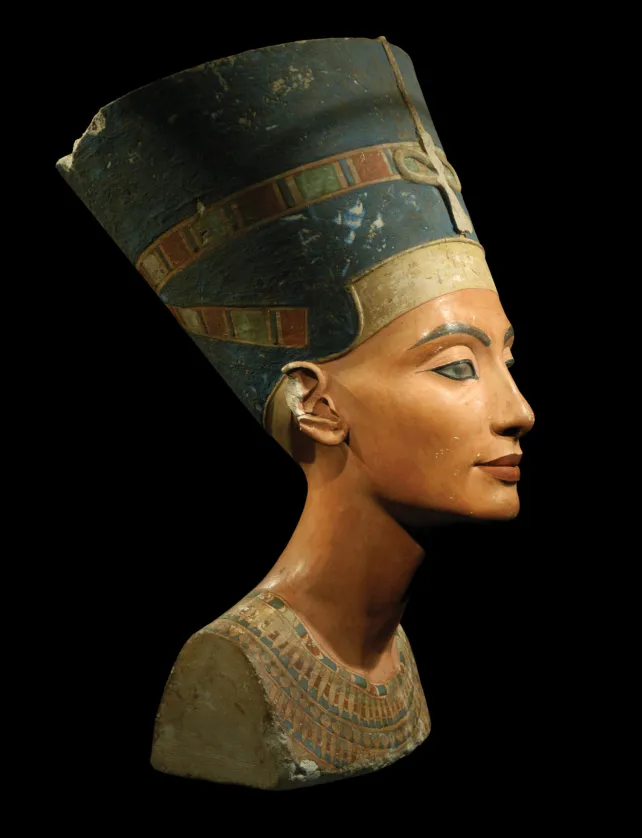 Nefertiti ~ c. 1360 BC Nefertiti ~ c. 1360 BC |
Akhenaton and the Amarna Period
p. 76 Gardner
"The Egyptians hoped and expected that the images and inventory of life, collected and set up within the protective stone walls of the tomb, would ensure immortality, but almost from the beginning of the elaborate interments, the thorough plundering of tombs became a profitable occupation. Only one royal burial place escaped nearly intact."
Conclusions
Central to understanding Ancient Egyptian art is its functionality. This art primarily served religious, social, and political purposes, with sculptures, paintings, and other art forms adorning the interiors of tombs, temples, and monuments. The art often comprises depictions of gods, goddesses, pharaohs, and scenes from the afterlife. Each piece, whether part of the grand pyramids or the intricate Book of the Dead, was created with a specific purpose, reflecting the Egyptians' strong belief in the afterlife and the divine order.
Going further ...
Questions:
- How does ancient Egyptian art serves as a bridge to understanding broader themes of cultural interchange, historical progression, and artistic evolution?
- How have ancient Egyptian artworks influence subsequent civilizations, including Greek, Roman, and modern times?
- How has this ancient civilization's unique perspectives permeated art, architecture, and even popular culture today. ?
Creating an effective "Egypt art lesson plan" for secondary education requires understanding the unique qualities and historical significance of these artistic creations.
Okay, so now I've put on some ads from Amazon - from which I may earn a few cents. (2025)
